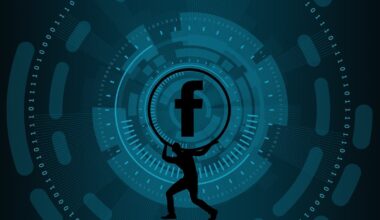Case Study: Responsive Strategies to Viral Social Media Crises
In today’s digital age, a social media crisis can escalate rapidly, affecting a brand’s reputation almost instantly. Companies must develop robust crisis management strategies to mitigate reputational damage effectively. It is crucial to first understand the nature of the crisis, assess its impact, and then respond accordingly. Key elements include communication transparency, promptness, and accountability. For instance, during the infamous *Pepsi* incident featuring Kendall Jenner, the backlash was significant. The company quickly issued an apology and removed the ads while addressing the public’s concerns. This established trust and demonstrated responsiveness. Stakeholders appreciated the acknowledgment of their feelings, which helped diffuse negativity. Organizations must remember that proactive monitoring of social media channels, coupled with a dedicated crisis communication team, is essential. Engaging with their audience during a crisis can help prevent misinformation and strengthen relationships. Passive approaches can lead to instability. Monitoring can involve utilizing tools that analyze sentimentality and track brand mentions. A well-structured communication strategy makes all the difference in reclaiming customer loyalty in turbulent times, and ultimately, healing the brand’s image.
Analyzing the Response of Major Brands
When examining various social media crises, the responses of major brands offer invaluable lessons. The way brands like *Starbucks* and *United Airlines* responded showcased different strategies. Starbucks faced backlash over racial profiling in one of its stores. Their response was swift; they closed stores for employee training. This showed commitment to social concerns. On the other hand, *United Airlines* reacted poorly during a passenger removal incident, leading to further outrage. Although they issued an apology, it lacked the sincerity required to quell the situation. A successful response generally includes a deeper acknowledgment of mistakes, a clear plan for corrective actions, and engaging the audience in the process. *Nike*, after facing criticisms for labor practices, initiated campaigns emphasizing equality and fair treatment in sports. These actions highlighted their commitment to enhancing public perception. Brands can also leverage user-generated content to foster a sense of community. For instance, sharing stories of real-life impacts can humanize the brand, creating empathy during a crisis. Every crisis unfolds uniquely, and adapting methods while learning from past mistakes can effectively safeguard the brand’s reputation.
Another critical aspect of managing social media crises involves the importance of framing the narrative. During a crisis, a brand’s control over the narrative can significantly impact public perception. When faced with backlash, achieving a narrative that emphasizes positive action is crucial. One effective method is utilizing storytelling, highlighting how the brand has learned and aims to improve. *Chipotle*, for example, dealt with health concerns from foodborne illnesses effectively by not only apologizing but also sharing their revamped food safety protocols. This allowed them to take back control of the conversation. Social media platforms provide an unprecedented opportunity for brands to communicate directly, allowing for instant messaging. Brands should reveal behind-the-scenes responses, showcasing their efforts to manage the situation. Transparency about steps being taken creates trust among consumers. Consequently, it shifts focus from the crisis itself to efforts made to improve. In doing so, a brand humanizes its presence. Furthermore, fostering dialogue with consumers through polls or open forums further enhances the brand’s image. Encouraging public participation fosters community and loyalty, crucial during recovery from crises.
Leveraging Analytics for Crisis Management
Effective crisis management on social media additionally requires the leverage of analytics. By employing metrics and data analysis, brands can identify trends and understand the crisis’s sentiment. During a crisis, gathering real-time feedback from consumers assists in gauging their emotions and expectations. Tools like sentiment analysis can highlight whether the audience views the brand positively or negatively. For instance, during the Oreo Super Bowl blackout incident, they promptly tweeted a clever ad, showcasing how real-time data can guide decisions. By leveraging analytics, brands can tailor their responses, ensuring they resonate with the audience’s feelings. Additionally, monitoring the evolving nature of the crisis allows brands to adapt their communication tactics dynamically. Data enables companies to identify key influencers and advocates who can lend support during tough times. Engaging these individuals can amplify positive messaging and redirect conversations toward favorable discussions. As brands explore their analytic capabilities, employing machine learning techniques can further refine the understanding of audience perceptions. Continuous assessments throughout and post-crisis are vital to evolve the brand’s engagement strategies and preserve consumer trust.
Additionally, training employees should be part of a robust social media crisis management plan. Frontline staff and public-facing employees need thorough training on how to address potential crises that may spill into the social media landscape. Establishing protocols ensures a unified approach across the company. Staff should be informed about the brand’s values, expectations during crises, and communication strategies. Regularly engaging in drills or simulations can prepare employees for real-life scenarios. For example, *Johnson & Johnson* effectively managed the Tylenol crisis by quickly teaching employees how to handle customer fears and confusion. Their focus on safety and customer-first approach proved essential to managing the fallout. *Zara* has also trained employees regarding their engagement policies. By educating staff, organizations can empower them to take appropriate action when facing potential crises. Moreover, developing internal communication frameworks can facilitate timely information sharing among teams. The investment in employee training and engagement sends a message that the brand values its workforce and preemptively safeguards against crises. Therefore, training employees not only equips them for challenges but also reinforces the overall brand ethos.
Social Listening and Community Engagement
Engaging with your audience effectively during a crisis can play a significant role in crisis resolution. Community engagement goes beyond just addressing concerns; it involves understanding and acknowledging the sentiments of consumers. Through social listening, brands can gather perspectives and pinpoint key issues impacting their image. *Lush* skincare, during its environmental campaign, actively encouraged customer feedback, thus fostering interactive discussions. This approach not only allowed the brand to revise certain aspects of their products and practices but also instilled a sense of collaboration with their audience. Brands should not underestimate the importance of timely responses to consumer inquiries and feedback. Utilizing platforms like Twitter and Instagram, companies can quickly address backlash and communicate their corrective actions. Prompt engagement can reduce the intensity of negative discussions and reframe the narrative positively. Furthermore, companies should share user-generated content that showcases their commitment to transparency and change. By highlighting testimonials or solutions proposed by the community, organizations can bring followers closer to the brand, strengthening loyalty and cultivating trust as they navigate through crises together.
Finally, evaluating the response after a crisis has subsided is essential for future improvements. Post-crisis evaluations allow brands to analyze what strategies worked and what didn’t. Gathering insights from different stakeholders, including employees, customers, and industry experts, reveals potential gaps in communication and response protocols. Structured feedback can lead to a better understanding of the audience’s sentiment and expectations during crises. Companies should encourage a culture of transparency and honesty in this process, reassuring internal and external audiences that learning and improvement are continuous. For instance, conducting surveys or focus groups post-crisis can provide vital information for refining communication strategies. Furthermore, documenting these learnings offers frameworks for quick reference during future crises. It assists in creating a responsive plan that adapitates to various crisis scenarios. Engaging in regular auditing of communication plans aids in identifying any weaknesses that might surface during equally challenging situations. Lastly, investing in continuous learning ensures that organizations can keep pace with fast-evolving social media landscapes, remaining prepared for potential future crises.


